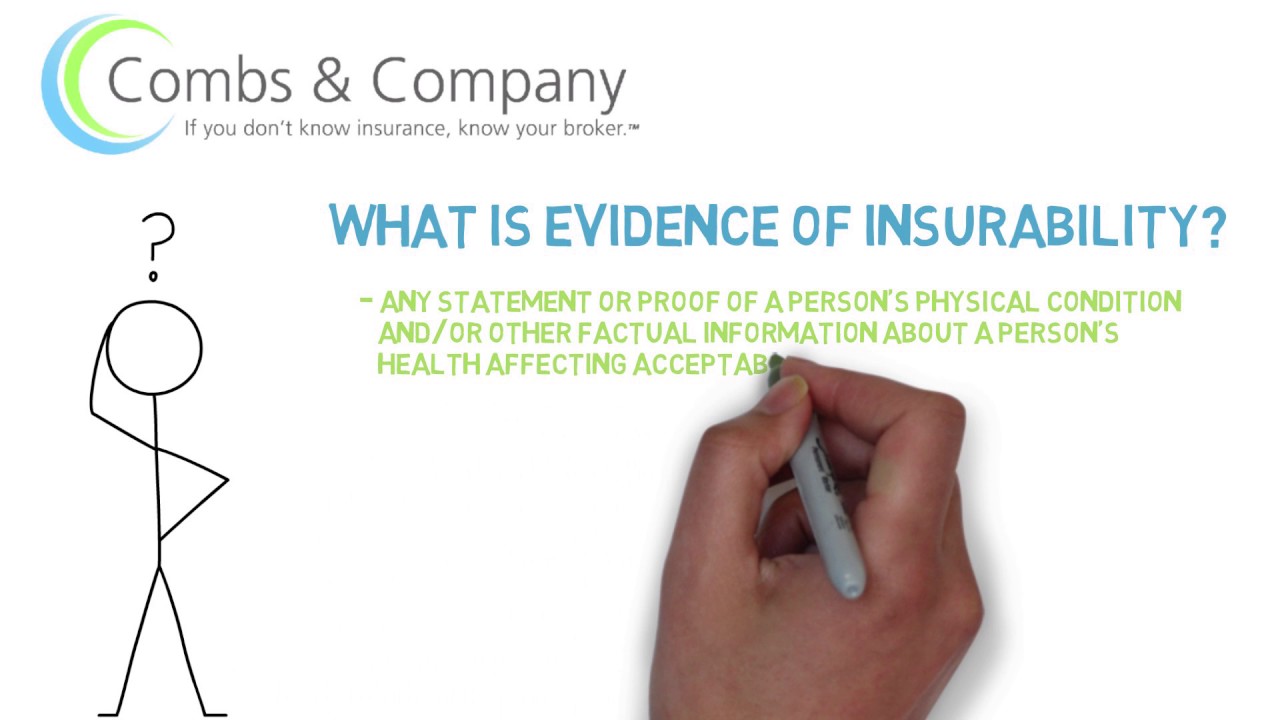Evidence of insurability is a crucial element in the insurance landscape, playing a pivotal role in determining the eligibility and premiums of insurance policies. This comprehensive guide delves into the types, methods, and significance of evidence of insurability, providing valuable insights for individuals seeking to secure and maintain adequate insurance coverage.
From understanding the various forms of evidence required by insurance companies to exploring the methods of providing such evidence, this article offers a comprehensive overview of the topic, empowering readers with the knowledge to navigate the insurance process effectively.
Types of Evidence of Insurability
Insurance companies require evidence of insurability to assess the risk of insuring an individual or business. Different types of evidence may be required depending on the type of insurance being sought.
The purpose of evidence of insurability is to provide the insurance company with information about the applicant’s health, lifestyle, and financial situation. This information helps the insurance company determine the applicant’s risk of making a claim and set the appropriate premium.
Medical Evidence, Evidence of insurability
Medical evidence is required for life insurance, health insurance, and disability insurance. This evidence may include:
- Medical history
- Physical exam
- Lab tests
- Imaging tests
Medical evidence helps the insurance company assess the applicant’s overall health and identify any potential health risks.
Lifestyle Evidence
Lifestyle evidence is required for life insurance, health insurance, and disability insurance. This evidence may include:
- Smoking status
- Alcohol consumption
- Exercise habits
- Diet
Lifestyle evidence helps the insurance company assess the applicant’s overall health and lifestyle choices. This information can help the insurance company determine the applicant’s risk of developing certain diseases or conditions.
Financial Evidence
Financial evidence is required for life insurance, health insurance, and disability insurance. This evidence may include:
- Income
- Assets
- Liabilities
- Debt
Financial evidence helps the insurance company assess the applicant’s financial situation and ability to pay premiums. This information can help the insurance company determine the applicant’s risk of lapsing their policy.
Last Point
In conclusion, evidence of insurability serves as a cornerstone of insurance policies, influencing premiums, coverage, and the overall insurability of individuals. Maintaining and providing accurate evidence is essential throughout the life of an insurance policy, ensuring continued protection and peace of mind.
Evidence of insurability is a critical factor in determining insurance premiums. One way to lower premiums is by increasing the deductible, which shifts more of the financial burden to the policyholder in the event of a claim. Why does having a higher deductible lower your insurance premiums?
This reduces the insurer’s risk and allows them to offer lower premiums. However, it’s important to carefully consider the financial implications of a higher deductible before making a decision.
Evidence of insurability, a crucial aspect in securing life insurance coverage, ensures that an individual meets the insurer’s health and lifestyle requirements. However, understanding supplemental life insurance meaning is equally important, as it provides additional coverage beyond the basic policy.
By providing evidence of insurability, individuals can demonstrate their eligibility for both primary and supplemental life insurance, ensuring financial protection for their loved ones in the event of unforeseen circumstances.
Evidence of insurability plays a crucial role in securing life insurance, as it demonstrates the applicant’s health and insurability. It can include medical records, lifestyle assessments, and financial information. Understanding the difference between life insurance and AD&D is also essential when evaluating evidence of insurability.
AD&D coverage, which focuses on accidental death and dismemberment, may have different insurability requirements compared to traditional life insurance policies.


